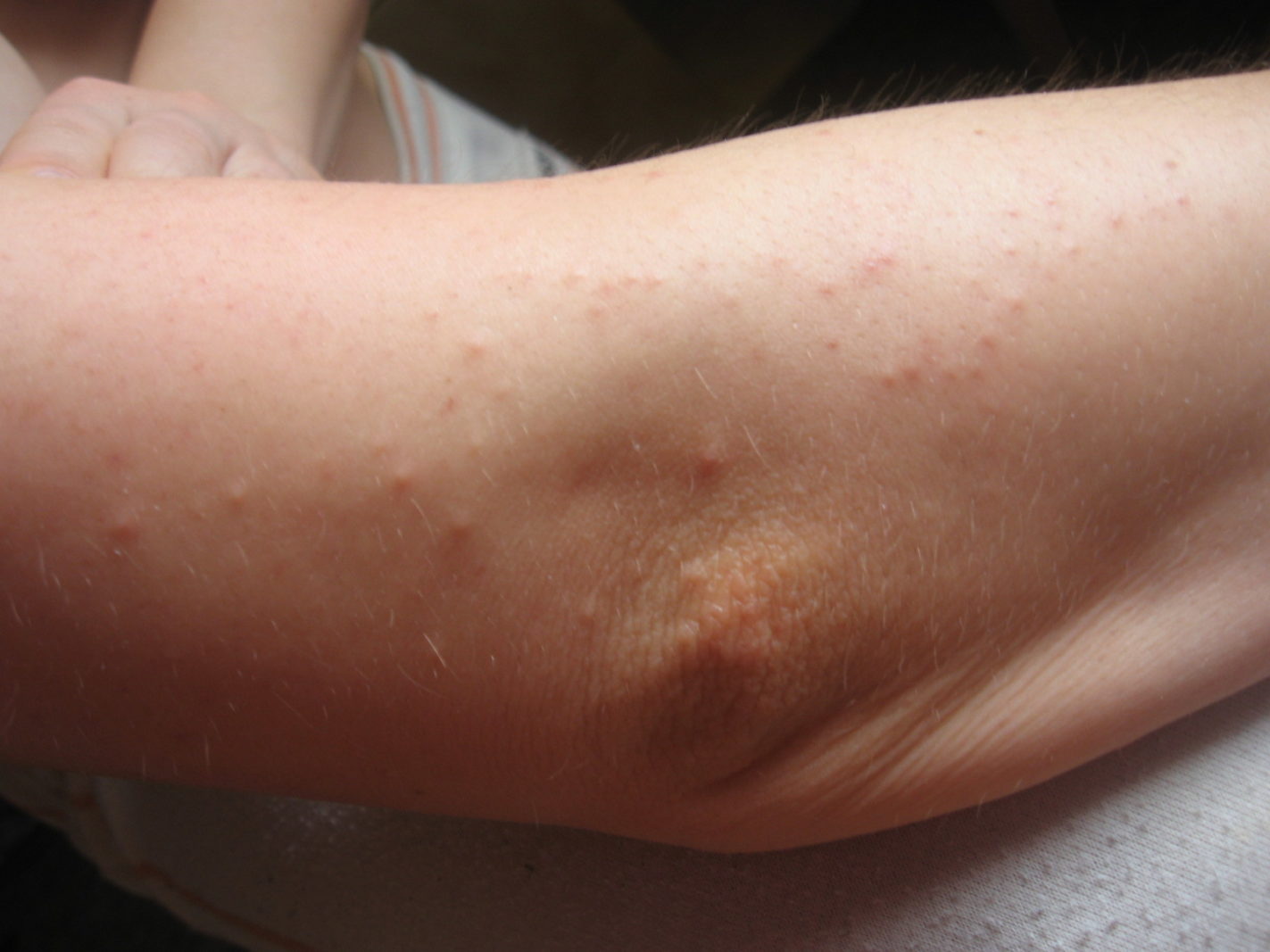What is Keratosis Pilaris (KP)?
Keratosis pilaris (KP) is a genetic disorder of keratinization of hair follicles of the skin.
It is extremely common (keratosis pilaris affects nearly 50-80% of all adolescents and approximately 40% of adults), and is a benign condition that manifests as small, rough folliculocentric keratotic papules, often described as chicken bumps, chicken skin, or goose-bumps, in characteristic areas of the body, particularly the outer-upper arms and thighs. However, KP can appear virtually anywhere on the body.
In general, keratosis pilaris is frequently cosmetically displeasing but medically harmless. So, don’t panic!
Why Do I Get It?
The etiology of keratosis pilaris is not fully known. However, a definite association of hyperkeratinization has been established. Hyperkeratinization is an excess formation or buildup of keratin, and is thought to cause the abrasive goose-bump texture of the skin. In patients with keratosis pilaris, the process of keratinization (the formation of epidermal skin) is found to be faulty. One theory is that surplus skin cells build up around individual hair follicles. The individual follicular bumps are often caused by a hair that is unable to reach the surface and becomes trapped beneath the keratin debris. Often, patients develop mild erythema (redness) around the hair follicles, which is indicative of the inflammatory condition. Often, a small, coiled hair can be seen beneath the papule. Not all the bumps have associated hairs underneath, though.
Seasonal variation is also sometimes described, with improvement of symptoms in summer months. Dry skin in the winter tends to worsen symptoms for some groups of patients. This again leads us back to the same issue with faulty keratinization, as skin that is dry tends to produce flakes. If these flakes of dead skin aren’t being shed properly by your body or mechanically by you, they can become trapped.
However, some new evidence suggests that it may not always be a keratinization issue. Keratosis pilaris may sometimes be caused by the circular hair shaft, which ruptures the follicular epithelium leading to inflammation and abnormal follicular keratinization. This means that KP in some people could actually be caused by a hair shaft defect. Of course, more evidence is still needed.
Keratosis pilaris may also be associated with phrynoderma (follicular hyperkeratosis, as mentioned earlier), which may result from a vitamin A deficiency. In one study, signs of vitamin A and vitamin B-complex deficiency were present in 3.2% and 9.6% patients, respectively. These numbers are intriguing, but not high enough to suggest that there is a cause-and-effect relationship. Interestingly, phrynoderma is believed by some to be a manifestation of severe malnutrition, not necessarily accompanying low vitamin A levels. While the literature supports a link between phrynoderma and vitamins E, B, A, and essential fatty acids general malnutrition seems to be the strongest association. This could result from an improper diet, or at least be exacerbated by it.
A significant association has also been found between keratosis pilaris as common cutaneous manifestations in persons with type 1 diabetes. This isn’t necessarily a meaningful finding, however, unless you have type 1 diabetes.
Keratosis pilaris may also be a genetically-based disorder (50-70% affected have a predisposition). This number is high enough to suggest that the genetic aspect could potentially drive the hyperkeratinization and/or the shaft defect.
Treatment Options
No cure or universally-effective treatment is known, and because there appears to be a very strong genetic aspect to it, we can never really expect to be “cured” entirely. The best we can usually hope for with things like KP is long-term remission.
Although symptoms usually remit with increasing age, this is not always the case. Some cases clear spontaneously without treatment, while some patients have lifelong keratosis pilaris with periods of remissions and exacerbations. However, as a general rule, treatment needs to be continuous.
Many patients have very good temporary improvement following a regular skin care program:
- Use a mild, soap-less cleanser to clean the area. Each person’s skin will be slightly different from the next person, and so you will need to find a cleanser that works for your needs.
- Gently exfoliate the area to help remove the small keratin plugs. You can do this with an exfoliating mitt, or you can skip the mechanical exfoliation and opt for step 4, instead.
- Moisturize, moisturize, moisturize. 2-3x a day, and with a bland moisturizer (minimal ingredients, no irritants). Coconut oil is often a good option as it deeply moisturizes, and even has some antibacterial properties. Apply immediately after a shower when the skin is still slightly damp to ensure optimal absorption. Otherwise, any bland, rich moisturizer should do the trick.
- Treatment with AHAs or BHAs may be especially helpful as a pre-moisturizing option, as they help to slough away dead skin and have keratolytic effects.
- Use blue/red light therapy. There has been some anecdotal evidence to suggest benefits from using light therapy.
- Keeping the skin well-nourished with a humidifier may be helpful for some people, as well.
Remember that keratosis pilaris treatment will vary from individual to individual, and it may take some time and careful selection of products to find what works for you. The Raksa Skin Skin Restoring Gel Cleanser has worked wonders for our customers. Don’t believe it? Just check the reviews.




